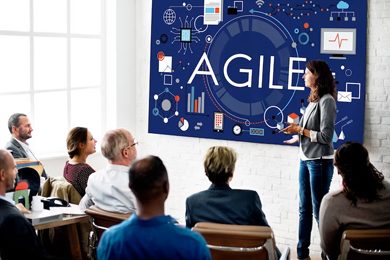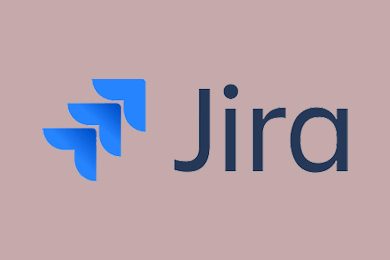This plan includes
- Limited free courses access
- Play & Pause Course Videos
- Video Recorded Lectures
- Learn on Mobile/PC/Tablet
- Quizzes and Real Projects
- Lifetime Course Certificate
- Email & Chat Support
What you'll learn?
- Scrum is one of the most popular Agile methodologies evolving in all aspects. It is an adaptive, fast, flexible, incremental, iterative, and effective methodology that was designed to deliver outstanding values quickly throughout a project. Scrum is responsible to maintain transparency of communication throughout the continuous progress of a project.
- Scrum is a framework for developing, delivering, and sustaining complex products. It is essentially a framework wherein people can address complex, adaptive problems. At the same time, they can deliver products of the highest possible value in a productive and creative manner.
- Scrum is an iterative and incremental structure for project management mainly used in agile software development. The scrum methodology indicates functional software, the versatility to change accompanying with emerging communication, collaboration, and business realities.
Course Overview
Scrum is one of the most popular Agile methodologies evolving in all aspects. It is an adaptive, fast, flexible, incremental, iterative, and effective methodology that was designed to deliver outstanding values quickly throughout a project. Scrum is responsible to maintain transparency of communication throughout the continuous progress of a project.
Scrum is a framework for developing, delivering, and sustaining complex products. It is essentially a framework wherein people can address complex, adaptive problems. At the same time, they can deliver products of the highest possible value in a productive and creative manner.
Scrum is an iterative and incremental structure for project management mainly used in agile software development. The scrum methodology indicates functional software, and the versatility to change accompanying emerging communication, collaboration, and business realities.
Scrum…
- Can be implemented easily
- Works for both simple and complex projects effectively
- Aids in providing fast response to changing requirements
- Fosters creativity and innovation
- Helps the development team work fast to implement solutions
- Reduces overall project cost
- Ensures customer satisfaction and employee satisfaction
- Promotes flexibility and adaptability
- Reduces time to market
- Enhances bottom line margins
- Can be implemented even if teams are distributed
- Works not just for the IT sector but several other sectors and industries like healthcare, sales, government, insurance, and more
- Motivates team members and gives them a sense of satisfaction.
Why Scrum?
We first created Scrum, with Ken Schwaber, twenty years ago, as a faster, more reliable, more effective way to create software in the tech industry. Up to that point and even as late as 2005—most software development projects were created using the Waterfall method, where a project was completed in distinct stages and moved step by step toward ultimate release to consumers or software users. The process was slow and unpredictable, and often never resulted in a product that people wanted or would pay to buy. Delays of months or even years were endemic to the process. The early step-by-step plans laid out in comforting detail in Gantt charts, reassured management that we were in control of the development process—but almost without fail, we would fall quickly behind schedule and disastrously over budget.
To overcome those faults, in 1993 we invented a new way of doing things: Scrum.
It is a radical change from the prescriptive, top-down project management methodologies of the past. Scrum, instead, is akin to evolutionary, adaptive, and self-correcting systems. Since its inception, the Scrum framework has become the way the tech industry creates new software and products. But while Scrum has become famously successful in managing software and hardware projects in Silicon Valley, it remains relatively unknown in general business practice. And that is why we wrote Scrum: to reveal and explain the Scrum management system to businesses outside the world of technology. In the tutorial we talk about the origins of Scrum in the Toyota Production System and the OODA loop of combat aviation. We discuss how we organize projects around small teams—and why that is such an effective way to work. We explain how we prioritize projects, how we set up one-week to one-month “sprints” to gain momentum and hold everyone on the team accountable, and how we conduct brief daily stand-ups to keep tabs on what has been done and on the challenges that have inevitably cropped up. And how Scrum incorporates the concepts of continuous improvement and minimum viable products to get immediate feedback from consumers, rather than waiting until a project is finished. As you’ll see in the pages that follow, we’ve used Scrum to build everything from affordable 100-mile-pergallon cars to bringing the FBI database systems into the twenty-first century.
Read on. We think you’ll see how Scrum can help transform how your company works, creates, plans, and thinks. We firmly believe that Scrum can help to revolutionize how business works in virtually every industry, just as it has revolutionized innovation and speed to market at a dazzling array of new companies and a breath-taking range of new products emerging out of Silicon Valley and the world of technology.
Scrum Guide 2020 - The Changes
Key Points:
- Scrum is still Scrum.
- One Team, One Product.
- More focused, more inclusive, less prescriptive.
- More focus on value and goals.
- Now only 14 pages.
Scrum is still Scrum.
- Scrum is a lightweight framework that helps people, teams and organizations generate value through adaptive solutions for complex problems.
- Scrum is simple. Try it as is and determine if its philosophy, theory, and structure help to achieve goals and create value.
- The Scrum framework is purposefully incomplete, only defining the parts required to implement Scrum theory.
- Scrum is built upon the collective intelligence of the people using it. Rather than provide people with detailed instructions, the rules of Scrum guide their relationships and interactions.
- Scrum is founded on empiricism and lean thinking.
Important links
Scrum Guide 2020
• https://www.scrumguides.org/download.html .
• https://www.scrumguides.org/scrum-guide.html .
Product goal
• https://www.scrum.org/resources/blog/scrum-guide-2020-update-introducing-product-goal .
Commitments
• https://www.scrum.org/resources/blog/scrum-guide-2020-update-commitments .
Self Management
• https://www.scrum.org/resources/blog/scrum-guide-2020-update-self-mgt-replaces-self-organization .
Accountabilities
• https://www.scrum.org/resources/blog/scrum-guide-2020-update-role-accountabilities .
Simplification of the Guide
https://www.scrum.org/resources/blog/scrum-guide-2020-update-what-has-been-removed .
Pre-requisites
- Desire to learn Agile Scrum.
- No previous Scrum knowledge or experience required.
Target Audience
- Beginners who want to learn Agile Scrum
- IT professionals interested in becoming a scrum master, and want to pursue this path
- Experienced Scrum Masters who are looking to refresh and expand their knowledge
- Project managers, or Developers looking to move into an agile workforce and increase their marketability
- Agile and Scrum Coaches, Scrum Master, Product Owners, Product Managers, Project Manager, Managers, Directors, Developers, Architects
- IT professionals looking to pass scrum master certifications
- Anyone looking to get a job as Scrum Master, or Product Owner
- Team members
- Both working and non-working professionals across all Industries
- Parents, Students and project managers as well as for
Curriculum 13 Lectures 01:26:43
Section 1 : IMPLEMENTING SCRUM - HOW TO BEGIN
- Lecture 2 :
- Why Scrum?
- Lecture 3 :
- IMPLEMENTING SCRUM - HOW TO BEGIN - 1
- Lecture 4 :
- What kinds of projects is Scrum considered to be suitable for?
- Lecture 5 :
- Is Scrum project management methodology a fit for my team?
- Lecture 6 :
- 16 EASY Questions to Check Whether You are Applying SCRUM Correctly?
- Lecture 7 :
- Scrum Best Practices
- Lecture 8 :
- Scrum Master Anti-Patterns
- Lecture 9 :
- Key TAKEAWAYs - 1
- Lecture 10 :
- Scrum Guide 2020 - The Changes
- Lecture 11 :
- Final Words
- Lecture 12 :
- Key TAKEAWAYs - 2
- Lecture 13 :
- IMPLEMENTING SCRUM - HOW TO BEGIN - 2
Our learners work at
Frequently Asked Questions
How do i access the course after purchase?
It's simple. When you sign up, you'll immediately have unlimited viewing of thousands of expert courses, paths to guide your learning, tools to measure your skills and hands-on resources like exercise files. There’s no limit on what you can learn and you can cancel at any time.Are these video based online self-learning courses?
Yes. All of the courses comes with online video based lectures created by certified instructors. Instructors have crafted these courses with a blend of high quality interactive videos, lectures, quizzes & real world projects to give you an indepth knowledge about the topic.Can i play & pause the course as per my convenience?
Yes absolutely & thats one of the advantage of self-paced courses. You can anytime pause or resume the course & come back & forth from one lecture to another lecture, play the videos mulitple times & so on.How do i contact the instructor for any doubts or questions?
Most of these courses have general questions & answers already covered within the course lectures. However, if you need any further help from the instructor, you can use the inbuilt Chat with Instructor option to send a message to an instructor & they will reply you within 24 hours. You can ask as many questions as you want.Do i need a pc to access the course or can i do it on mobile & tablet as well?
Brilliant question? Isn't it? You can access the courses on any device like PC, Mobile, Tablet & even on a smart tv. For mobile & a tablet you can download the Learnfly android or an iOS app. If mobile app is not available in your country, you can access the course directly by visting our website, its fully mobile friendly.Do i get any certificate for the courses?
Yes. Once you complete any course on our platform along with provided assessments by the instructor, you will be eligble to get certificate of course completion.
For how long can i access my course on the platform?
You require an active subscription to access courses on our platform. If your subscription is active, you can access any course on our platform with no restrictions.Is there any free trial?
Currently, we do not offer any free trial.Can i cancel anytime?
Yes, you can cancel your subscription at any time. Your subscription will auto-renew until you cancel, but why would you want to?
Instructor

3654 Course Views
4 Courses



 Tech & IT
Tech & IT
 Business
Business
 Coding & Developer
Coding & Developer
 Finance & Accounting
Finance & Accounting
 Academics
Academics
 Office Applications
Office Applications
 Art & Design
Art & Design
 Marketing
Marketing
 Health & Wellness
Health & Wellness
 Sounds & Music
Sounds & Music
 Lifestyle
Lifestyle
 Photography
Photography




.jpg)



.jpg?crop=smart&width=600&height=400)











